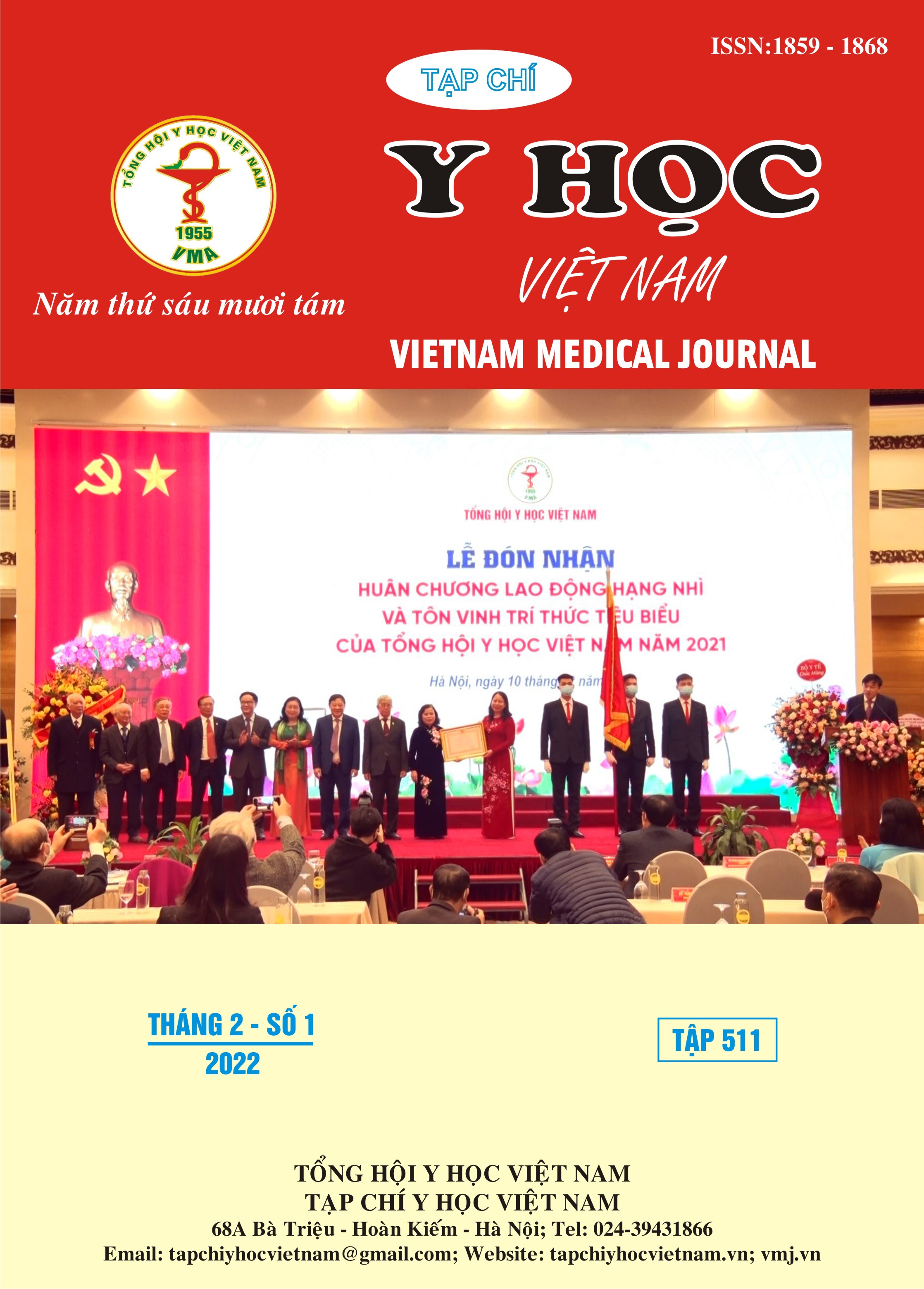ĐẶC ĐIỂM HÌNH ẢNH VÀ KẾT QUẢ ĐIỀU TRỊ DỊ DẠNG ĐỘNG TĨNH MẠCH NÃO VỠ TẠI BỆNH VIỆN QUÂN Y 103
Nội dung chính của bài viết
Tóm tắt
Mục tiêu: Mô tả đặc điểm hình ảnh và đánh giá kết quả điều trị AVM não vỡ bằng can thiệp nút mạch. Đối tượng và phương pháp nghiên cứu: nghiên cứu tiến cứu, mô tả cắt ngang 156 bệnh nhân được chẩn đoán chảy máu não do vỡ dị dạng động tĩnh mạch (AVM) ở Khoa Đột quỵ, Bệnh viện 103 từ tháng 08 năm 2009 đến tháng 06 năm 2021. Kết quả: Chảy máu ở thùy thùy đỉnh, thùy trán và thùy chẩm với tỷ lệ là 26,92%, 23,72%, 18,59 %, ở tiểu não là 14,01%, ít gặp ở não thất hay vùng dưới vỏ, điểm chảy máu trên CT bơm thuốc 43,90.%. Trên DSA thấy phình động mạch nuôi 8,97%, số cuống mạch nuôi trung bình là 1,98 ± 0,64, Spetzler – Martin 2 và 3 điểm có tỷ lệ 35,89% và 30,77%. Can thiệp nút AVM 80,13% với 40% là tắc hoàn toàn. Biến chứng tắc mạch 4%, chảy máu 2,4% và tử vong 0,08%. Kết luận: Chảy máu do AVM thường chảy máu ở thùy não, có thể nhận biết nguy cơ chảy máu tái phát qua CT bơm thuốc thấy điểm chảy máu. Can thiệp nút mạch là một phương pháp điều trị hiệu quả, biến chứng thấp
Chi tiết bài viết
Từ khóa
rupture brain arteriovenous malformation, brain arteriovenous malformation
Tài liệu tham khảo
2. Bir S.C., Maiti T.K., Konar S. et al. (2016). Overall outcomes following early interventions for intracranial arteriovenous malformations with hematomas, J Clin Neurosci, 23: 95-100.
3. Katsaridis V., Papagiannaki C., Aimar E. (2009). Embolization of brain arteriovenous malformations for cure: because we could and because we should, AJNR. American journal of neuroradiology, 30(5): e67-e68.
4. Nguyễn Ngọc Cương (2020). Đánh giá kết quả điều trị nút mạch dị dạng động tĩnh mạch não đã vỡ bằng dung dịch kết tủa không ái nước (phil), Luận án Tiến sỹ, Đại học Y Hà Nội.
5. Mjoli N., Le Feuvre D., Taylor A. (2011). Bleeding source identification and treatment in brain arteriovenous malformations, Interventional neuroradiology: journal of peritherapeutic neuroradiology, surgical procedures and related neurosciences, 17(3): 323-330.
6. Flores B.C., Klinger D.R., Rickert K.l. et al. (2014). Management of intracranial aneurysms associated with arteriovenous malformations %J Neurosurgical Focus FOC, 37(3): E11.
7. Derdeyn C.P., Zipfel G.J., Albuquerque F.C. et al. (2017). Management of Brain Arteriovenous Malformations: A Scientific Statement for Healthcare Professionals From the American Heart Association/American Stroke Association, 48(8): e200-e224.
8. Murthy S.B., Merkler A.E., Omran S.S. et al. (2017). Outcomes after intracerebral hemorrhage from arteriovenous malformations, Neurology, 88(20): 1882-1888.


